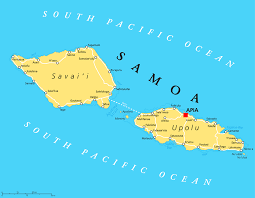By Dr Leon ZHONG, China Medical Team in NRH of Solomon Islands
IN the last article, we discussed the symptoms of kidney stones. Today, we are going to find out what to do when you suspect you might have kidney stones from my clinical perspective. Clinically, there are various ways to diagnose and treat kidney stones, and choosing the right method depends on the size and location of the stone, as well as your overall health.
Diagnosis
If your doctor suspects that you have a kidney stone, you may have diagnostic tests and procedures, such as:
Ultrasound: Ultrasound is the most common method of examination and the first choice for ruling out kidney stones, featuring safety, lack of radiation and quick results. Particularly, it is suitable for pregnant women or others who need to avoid radiation. However, its disadvantages include potentially inaccurate visualization of stones, sometimes failing to clearly show their specific locations, or even missing smaller stones.
X-ray Examination: Compared to ultrasound, the advantage of X-rays is that they can more directly visualize the exact location and size of the stones. However, certain types of stones may not show up on X-rays, and smaller stones might also be overlooked, so an X-ray cannot completely rule out the absence of stones.
CT Scan: CT Scan can be considered as an advanced version of X-ray examination because it provides clearer images. When the previous two tests do not conclusively identify stones, a CT scan is necessary. It allows doctors to clearly see the stone’s exact location in your body and can detect some stones that are invisible to ultrasounds and X-rays, revealing if there is any kidney swelling. The downsides are obvious that it’s more expensive and involves a small amount of radiation, though the radiation is not likely to have a significant impact on your health.
Treatment
Treatment for kidney stones varies, depending on the type of stone and the cause.
Drinking More Water: For smaller kidney stones, increasing your daily water intake can help your body naturally expel small stones while also reducing the formation of new ones. However, this method is only effective for stones smaller than 5 millimeters instead of larger stones or stones in difficult locations.
Medication: Prescribed medications can help alleviate pain and promote the expulsion of small stones. This is because some drugs can dilate your ureter, allowing stones to pass more smoothly, while others can dissolve the stones. However, medication is only suitable for small stones or as an adjunct treatment before or after surgery. At last, drug use must be guided by a specialist.
Ureteroscopy and Lithotripsy: Simply put, this involves using a small camera-equipped tube inserted through the urethra and ureter to reach and directly observe the stones, which are then broken up. The fragments can either be removed during the surgery or pass out on their own. This minimally invasive treatment breaks up the stones through the body’s natural orifices without any incisions. Till now, under the guidance of the China medical team at NRH, local doctors have mastered these skills and have successfully used this method to help numerous patients.
Laparoscopic or Other Surgical Procedures: When some stones are not suitable for ureteroscopic treatment, a laparoscopic procedure is another option. This also involves a minimally invasive surgery making a few small incisions about 1 cm in size in the abdomen and removing the stones intact with the help of a small camera. This procedure features minor trauma, quick recovery, and removes stones intact. However, it requires general anesthesia and carries certain risks. With the help of Dr Shawn and Dr Leon, this treatment method is also commonly performed at NRH Hospital.
Conclusion
The best treatment method depends on a variety of factors, including the size and location of the stone and the patient’s overall health condition. After a series of detailed tests, specialists usually develop personalized treatment plans based on detailed diagnostic results. Understanding these diagnostic and treatment methods not only helps patients better comprehend their medical options but also facilitates wiser decision-making during discussions with their doctors.
China Medical Team NRH














